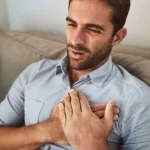Involuntary muscle movement or twitching may seem an unusual event for most people but at times it could actually be a normal occurrence especially when it happens occasionally. Being tired, stressed or lack of rest sometimes could trigger such events. Since there are numerous health conditions that could precipitate such an event either short term or seems forever, it can be difficult to know what is actually it. Ask a doctor and you should get a better understanding about it.

One of the symptoms that could describe involuntary muscle movement is dystonia. Dystonia is a movement disorder characterised by involuntary muscle contraction or spasm that exhibits slow repetitive movements or abnormal postures/position. It is a condition that is long-lasting that may affect only one muscle or groups of muscle of any part of the human body such as face, arms, legs and trunk.
Dystonia occurs due to disturbances of the central nerve system or in other words, the brain. It results from the abnormality or damage to the basal ganglia, the deep region of the brain controlling the body movement such as the speed and smoothness of movement by preventing unintentional movements. It could also be due to the abnormality of the neurotransmitters (the brain chemicals which are responsible for the brain function to process impulses from or to the body parts) or abnormality of the brain processing information relating to body movement.
Causes of dystonia have yet to be confirmed and many cases of dystonia are not known because there are no abnormalities that are visible or significant that can be seen from imaging tests including the magnetic resonance imaging (MRI). Below are possible causes that has been believed by researchers to be causing dystonia:
- Mutation of the gene causing dystonia such as DYT1. DYT3, DYT5, DYT6, DYT11, DYT12 and DYT28
- Birth injury such as neonatal brain haemorrhage or lack of oxygen to the brain (hypoxia)
- Cerebral palsy
- Brain tumour
- Stroke
- Parkinson’s disease
- Multiple sclerosis
- Malformation of the blood vessels
- Injuries to the brain or spinal cord
- Inflammatory diseases
- Infection
- Medicine such as the antipsychotics drugs
- Exposure harmful substance such as carbon monoxide, methanol, cyanide or manganese
Dystonia may be experienced by anyone of any age. It often progresses gradually throughout various stages. It started off as intermittent repetitive movements which were often only obvious during voluntary movements or stressful conditions. Then, dystonic postures or movements can be seen while walking and eventually even when a person is relaxed or at rest. This usually ends up with a fixed postural deformity. For some people, dystonia may not be progressive as it already stabilises at a certain stage. Symptoms of dystonia include uncontrolled muscle cramps/spasm such, torticollis which is marked by twisting of the neck shaky movements/tremors, uncontrolled blinking (blepharospasm), difficulty chewing or speech (oromandibular dystonia), strained speech or breathy speech (laryngeal dystonia) abnormal way of walking (gait disturbance), twisting of the trunk (contortion torso) and the yips which affect part of the body from repetitive activity such as the writer’s cramp or musician’s dystonia. Typically, pain sensation is not associated with dystonia but it may lead to pain in certain affected areas or becoming painful as time goes by.
Dystonia is definitely not something a person without medical knowledge able to spot well. Getting medical advice is the wisest step to take if a person finds themselves having symptoms related to dystonia. This could help the patient to get the right treatment based on what type of dystonia they are experiencing. Available treatments are injections of botulinum toxin, anticholinergic drugs such as trihexyphenidyl/benztropine, electromyography, deep brain stimulation, physiotherapy and occupational therapy. Getting the right treatment is crucial to improve one’s quality of life.
Also read – Dengue Prevention

Arlene Ross is a health blogger who enjoys writing on her website. Arlene has always had an interest in medicine, and she hopes to become a doctor one day. She loves reading about medical discoveries, especially when they are for rare conditions that don’t have much research yet. She also likes exploring the science behind different diets and nutrition programs.













